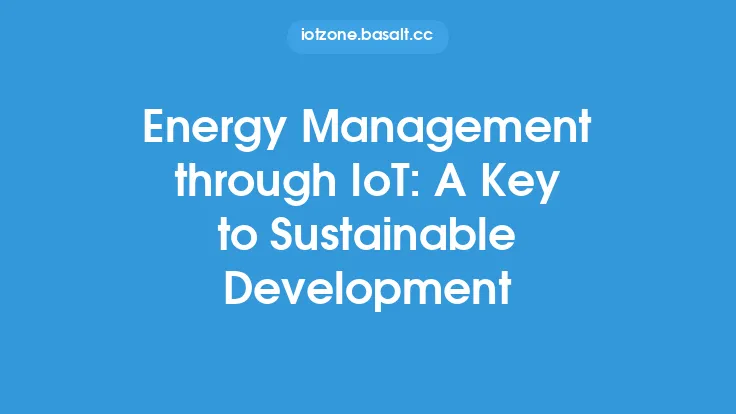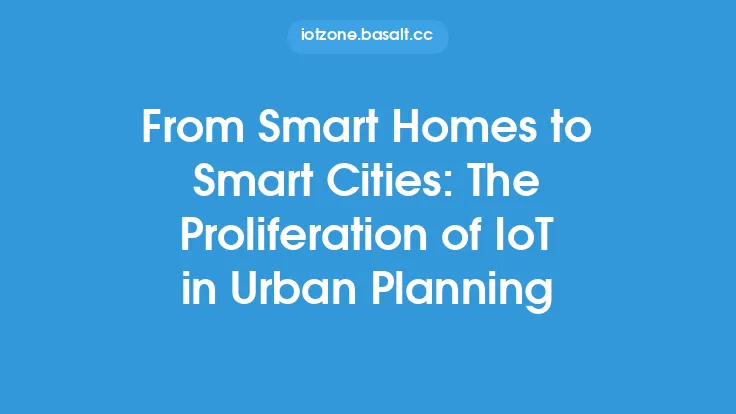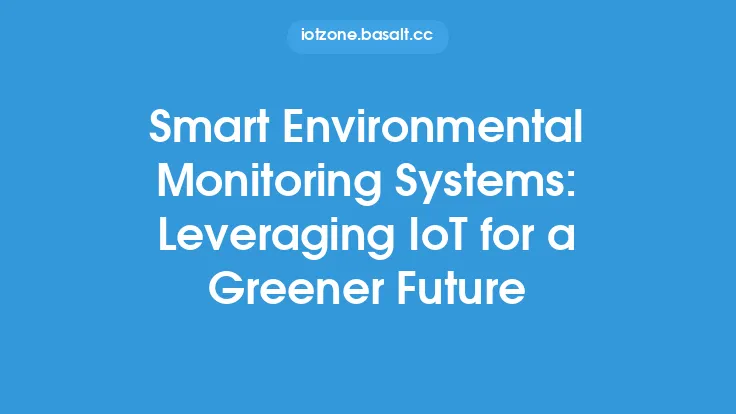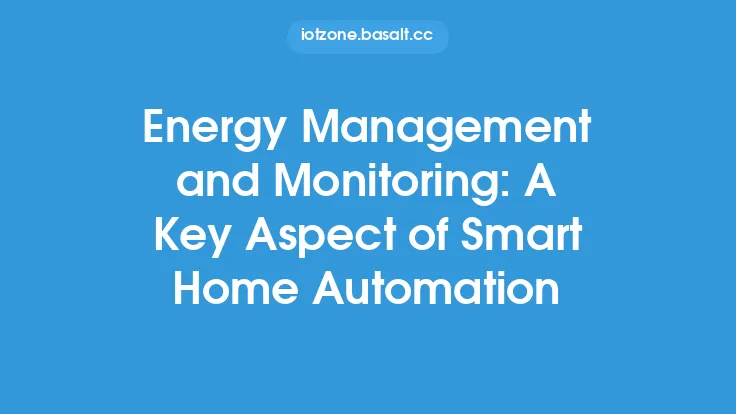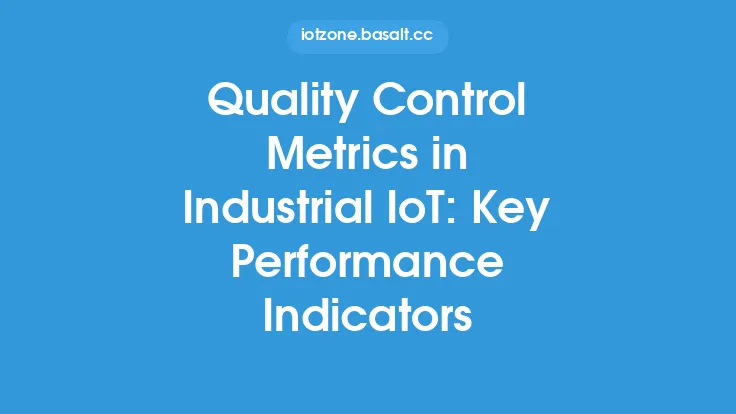The world is witnessing a significant shift towards urbanization, with more than half of the global population residing in cities. This trend is expected to continue, with the United Nations predicting that by 2050, over 70% of the world's population will live in urban areas. As cities grow, so does the concern for air quality, which has become a major environmental and health issue. The World Health Organization (WHO) estimates that nine out of ten people worldwide breathe polluted air, resulting in seven million premature deaths annually. To address this issue, cities are turning to Internet of Things (IoT) sensors to monitor air quality, providing a key to sustainable urban development.
Introduction to Air Quality Monitoring
Air quality monitoring is the process of measuring the levels of pollutants in the air, such as particulate matter (PM), nitrogen dioxide (NO2), ozone (O3), and volatile organic compounds (VOCs). Traditional air quality monitoring systems rely on manual sampling and laboratory analysis, which can be time-consuming, expensive, and limited in scope. IoT sensors, on the other hand, offer a more efficient, cost-effective, and real-time solution for monitoring air quality. These sensors can be deployed in various locations, including streets, buildings, and public spaces, providing a comprehensive picture of air quality across the city.
IoT Sensor Technologies for Air Quality Monitoring
IoT sensors for air quality monitoring employ various technologies, including optical, electrochemical, and metal oxide semiconductor (MOS) sensors. Optical sensors measure the scattering of light by particles, while electrochemical sensors detect changes in the electrical current caused by the presence of pollutants. MOS sensors, on the other hand, detect changes in the electrical resistance of a metal oxide material in response to pollutants. These sensors can be integrated into a network, allowing for real-time data collection, transmission, and analysis.
Network Architecture and Data Management
The network architecture for IoT-based air quality monitoring typically consists of a hierarchical structure, with sensors at the lowest level, followed by gateways, and finally, a central server or cloud platform. The sensors transmit data to the gateways, which then forward the data to the central server or cloud platform for processing and analysis. The data management system should be designed to handle large volumes of data, ensure data quality and integrity, and provide real-time visualization and alerts. The system should also be scalable, secure, and interoperable with other urban infrastructure systems.
Applications and Benefits of IoT-Based Air Quality Monitoring
IoT-based air quality monitoring has numerous applications and benefits, including:
- Real-time monitoring and alerts: Providing citizens with real-time information on air quality, enabling them to take necessary precautions to minimize exposure.
- Urban planning and policy-making: Informing urban planning and policy decisions, such as optimizing traffic flow, identifying pollution hotspots, and developing strategies for reducing emissions.
- Public health protection: Enabling health authorities to issue alerts and take measures to protect vulnerable populations, such as children, the elderly, and those with pre-existing medical conditions.
- Environmental sustainability: Supporting the development of sustainable urban environments, by monitoring and reducing pollution from various sources, including industrial activities, transportation, and energy generation.
Challenges and Limitations
While IoT-based air quality monitoring offers numerous benefits, there are also challenges and limitations to be addressed, including:
- Sensor accuracy and calibration: Ensuring the accuracy and reliability of sensor readings, which can be affected by various factors, such as temperature, humidity, and interference from other sources.
- Data quality and management: Managing large volumes of data, ensuring data quality and integrity, and providing real-time visualization and alerts.
- Security and privacy: Ensuring the security and privacy of data, particularly in public networks and cloud platforms.
- Scalability and interoperability: Ensuring the scalability and interoperability of the system, to accommodate growing urban populations and integrate with other urban infrastructure systems.
Future Directions and Opportunities
The future of IoT-based air quality monitoring is promising, with opportunities for innovation and growth, including:
- Integration with other urban systems: Integrating air quality monitoring with other urban systems, such as transportation, energy, and waste management, to create a more comprehensive and sustainable urban environment.
- Artificial intelligence and machine learning: Applying artificial intelligence and machine learning algorithms to analyze data, identify patterns, and predict air quality trends.
- Citizen engagement and participation: Engaging citizens in air quality monitoring, through participatory sensing and crowdsourcing initiatives, to raise awareness and promote community involvement.
- Standardization and regulation: Developing standards and regulations for IoT-based air quality monitoring, to ensure consistency, accuracy, and reliability across different systems and locations.
Conclusion
IoT-based air quality monitoring is a key component of sustainable urban development, providing a real-time and comprehensive picture of air quality across the city. By leveraging IoT sensor technologies, network architecture, and data management systems, cities can reduce pollution, protect public health, and promote environmental sustainability. While there are challenges and limitations to be addressed, the future of IoT-based air quality monitoring is promising, with opportunities for innovation, growth, and community engagement. As cities continue to grow and evolve, IoT-based air quality monitoring will play an increasingly important role in creating a healthier, more sustainable, and more livable urban environment.
